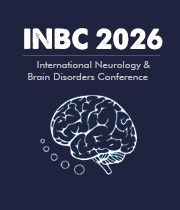Visual Cortex Of The Brain
The visual cortex is the part of the brain responsible for processing visual and spatial information. It is located at the back of the occipital lobe in the cerebrum and is composed of several areas. The primary visual cortex (V1) is the first area in the visual processing pathway. It receives input from the optic nerve and is responsible for recognizing basic features such as lines, edges, shapes, color, and motion. The information is then sent to the extrastriate cortex (V2-V5) for further processing. The extrastriate cortex is responsible for higher-order functions such as recognizing faces, objects, and scenes. In V1, the neurons are organized into columns or orientation columns. These columns are sensitive to specificorientation angles such as “vertical,” “horizontal,” and so on. The neurons in these columns send information “upstream” to the higher-order regions of the brain. The visual cortex is involved in more than simply seeing. It is also responsible for depth perception, motion detection, and visually-guided object recognition. It works together with other areas in the brain to enable us to interpret our environment and make sense of what we see. The visual cortex is highly plastic and can adapt to new visual environments. For example, if a person loses their sight, their visual cortex will reorganize itself to respond to different inputs, such as sound or touch. The visual cortex is a critical part of the brain and is responsible for many of our most important senses. It works together with the rest of the brain to interpret the world around us and help us understand it.

Joe Sam Robinson
Mercer University, United States
Robert B Slocum
University of Kentucky HealthCare, United States
George Diaz
Memorial Healthcare Systems, United States
Daniel Curry
Texas Children’s Hospital, United States
Zhenhuan Liu
Guangzhou University Chinese Medicine, China
Kiran Ghotra
Lake Erie College of Osteopathic Medicine, United States




Title : Atypical presentation of Juvenile myoclonic epilepsy in a 16-year-old female: A Case Report
George Diaz, Memorial Healthcare Systems, United States
Title : What we don’t know about hydrocephalus and It’s management
Daniel Curry, Texas Children’s Hospital, United States
Title : Artificial intelligence-driven DWI and FLAIR for the detection of early stroke changes: A systematic review
Shari L Guerra, The Medical City, Philippines
Title : Mapping neuroplasticity in occupational therapy: Evidence-based interventions with measurable neural outcomes
Jessica Marchant, Texas Woman's University, United States
Title : Non-pharmacologic management of orthostatic hypotension in inpatient rehabilitation: A quality improvement initiative
Laura Steakin, Rehabilitation Institute at Sinai, United States
Title : Non-pharmacologic management of orthostatic hypotension in inpatient rehabilitation: A quality improvement initiative
Mackenzie Weber, Rehabilitation Institute at Sinai, United States